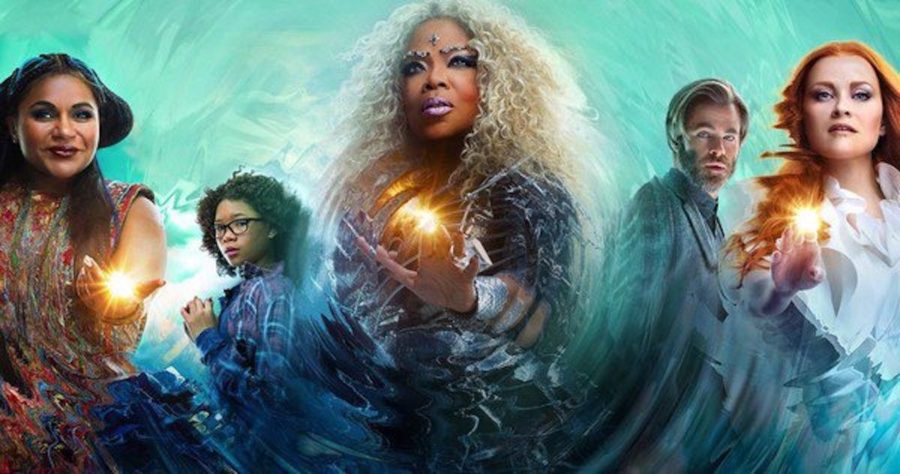Not Lost, Just… Wrinkled
The Disney adaptation of a 1962 classic book struggles to keep the magic alive despite flashy visuals
March 13, 2018
Audiences have been enamored ever since 1962 when Madeleine L’Engle released the novel A Wrinkle In Time. The coming of age science fiction story combines a sense of childlike wonderment with a heartfelt message of acceptance to grab the audience’s hearts, which explains why the recent Disney movie adaptation directed by Ava DuVernay amassed so much hype in anticipation of its release. The final product, however, struggles to keep the magic alive. While its embrace of female empowerment and diversity is a triumph, the stilted dialogue and firing-on-all-cylinders visuals make the film veer into cheesiness.
The movie follows the story of Meg Murry (Storm Reid), a 13-year-old girl mourning the four-year-long disappearance of her scientist father (Chris Pine), and her 6-year-old precocious child prodigy brother Charles Wallace (Deric McCabe), as they travel through space to find their father with the help of three supernatural astral travelers named Mrs. Who (Mindy Kaling), Mrs. Whatsit (Reese Witherspoon), and Mrs. Which (Oprah Winfrey).
The Mrs. W’s were actually my first issue with the movie- although they’re decked out in fantastical costumes and help the children greatly in their quest, their collective presence on screen felt weak at times when compared to the CGI around them. Even Oprah’s supersized figure did not give off a supernatural, omniscient vibe in comparison to the other magical beings on Camazotz. You’d think with a budget of $100 million that something more could be done with the three women’s costumes to give them a more celestial air. Witherspoon and Kaling did have some moments of comedic relief, but the chemistry between the three of them as a team was not developed.
The dialogue, which was largely spoken in platitudes and clichés, took me out of scenes which could have been affecting because it seemed the actors were playing the emotion and melodrama rather than their objectives. I felt myself cringing during some conversations between Calvin (played by the plaintive Levi Miller) and Meg, who otherwise did a remarkable job portraying desperation and grief. Deric McCabe’s performance as Charles Wallace perhaps cannot be faulted as the actor is only nine years old, but the scenes when he is taken over by the It felt almost comical rather than ominous. I did, however, appreciate Zach Galifianakis’ comedic timing in his cameo as the whimsical Happy Medium and the emotional reunion between Meg and her father at the end of the film. Chris Pine and Storm Reid captured the emotion of a parent-child reunion adeptly without saying much of anything at all, which speaks to their skills as actors.
While the movie was visually fantastic, the purpose behind some scenes’ aesthetics got lost. It felt as if perhaps the cinematography team wanted to jam pack as many daring visuals as possible to seem profound when in reality there was no deeper meaning, unless there was, and in that case it was too subtle. That being said, the bright pastels and sinister thumping balls with the children in their driveways on Camazotz were so creepy and cool that I actually got a little paranoid in the middle of the empty theater I was in (important to note: A Wrinkle In Time is actually second at the box office right now behind Black Panther– I just went to go see it late at night).

The best part of the movie was undoubtedly the message of female empowerment and self-acceptance. The incredibly strong black female protagonist that Storm Reid gives us with Meg drives the movie the whole way through. Her acting choices make up for some of the movie’s faults. In the final scene where the It shows her a “better” version of her with straight hair, no glasses, and “cooler clothes”, she rejects them and chooses to remain flawed, because as Mrs. Whatsit says, they are her greatest strength. The scenes that reveal Calvin’s troubled home life and the school bully’s eating disorder are also impactful and even bring a tear or two to the eye. However flawed the movie itself may be, these scenes elevate the film by emphasizing the importance of forgiveness and self esteem, which are incredibly relevant issues for a children’s movie to promote.
Final Verdict: B-/C+



